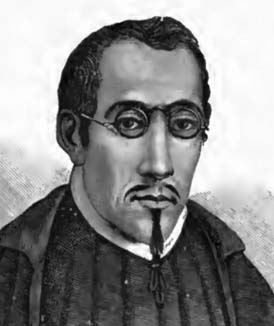

تاريخ الرياضيات

الاعداد و نظريتها

تاريخ التحليل

تار يخ الجبر

الهندسة و التبلوجي


الرياضيات في الحضارات المختلفة

العربية

اليونانية

البابلية

الصينية

المايا

المصرية

الهندية


الرياضيات المتقطعة

المنطق

اسس الرياضيات

فلسفة الرياضيات

مواضيع عامة في المنطق


الجبر

الجبر الخطي

الجبر المجرد

الجبر البولياني

مواضيع عامة في الجبر

الضبابية

نظرية المجموعات

نظرية الزمر

نظرية الحلقات والحقول

نظرية الاعداد

نظرية الفئات

حساب المتجهات

المتتاليات-المتسلسلات

المصفوفات و نظريتها

المثلثات


الهندسة

الهندسة المستوية

الهندسة غير المستوية

مواضيع عامة في الهندسة

التفاضل و التكامل


المعادلات التفاضلية و التكاملية

معادلات تفاضلية

معادلات تكاملية

مواضيع عامة في المعادلات


التحليل

التحليل العددي

التحليل العقدي

التحليل الدالي

مواضيع عامة في التحليل

التحليل الحقيقي

التبلوجيا

نظرية الالعاب

الاحتمالات و الاحصاء

نظرية التحكم

بحوث العمليات

نظرية الكم

الشفرات

الرياضيات التطبيقية

نظريات ومبرهنات


علماء الرياضيات

500AD

500-1499

1000to1499

1500to1599

1600to1649

1650to1699

1700to1749

1750to1779

1780to1799

1800to1819

1820to1829

1830to1839

1840to1849

1850to1859

1860to1864

1865to1869

1870to1874

1875to1879

1880to1884

1885to1889

1890to1894

1895to1899

1900to1904

1905to1909

1910to1914

1915to1919

1920to1924

1925to1929

1930to1939

1940to the present

علماء الرياضيات

الرياضيات في العلوم الاخرى

بحوث و اطاريح جامعية

هل تعلم

طرائق التدريس

الرياضيات العامة

نظرية البيان
Carlos de Siguenza y Gongora
المؤلف:
I A Leonard
المصدر:
Don Carlos de Siguenza y Gongora : A Mexican Savant of the Seventeenth Century
الجزء والصفحة:
...
18-1-2016
1336
Born: 20 August 1645 in Mexico City, Mexico
Died: 22 August 1700 in Mexico City, Mexico

Siguenza y Gongora's father was a tutor to the royal family in Spain before sailing to Mexico (then known as New Spain) to make his life in the new world. Siguenza was educated at home, his father being well able to provide the education his son needed. In 1662 Siguenza took his first religious vows in the Jesuit College in Tepoztlan where he had begun his training for the Church. From there he moved to Puebla to continue his religious studies at the College of the Holy Spirit.
The town of Puebla, 130 km southeast of Mexico City, was characteristically Spanish and had been founded over one hundred years before as Puebla de los Angeles in 1532. It was a great religious centre and a natural place for Siguenza to study. However, in 1667 Siguenza was expelled from the College for failing to observe the correct discipline. He returned to Mexico City to study at the university there.
The University of Mexico was founded in Mexico City as the Royal Pontifical University by Antonio de Mendoza who was the first viceroy of New Spain. The university was controlled by the Roman Catholic church so, in entering this university, Siguenza was still maintaining his connections with the Church despite the expulsion from the College in Puebla. He also remained a priest, despite the expulsion, and was chaplain to the Amor de Dios Hospital in Mexico City. In 1672 Siguenza was appointed to the chair of mathematics at the University. He was to hold this appointment for 20 years and contribute not only to mathematics but also to astronomy and cosmography.
Siguenza's writings did not always find favour with the Church. Father Eusebio Kino was a Jesuit missionary. He had been educated in Germany, studying mathematics and astronomy, and then entered the Society of Jesus before being sent as a missionary to Mexico City in 1681. Siguenza had published a work in that year which was intended to calm public fears over the appearance of a comet. In reply to criticism of this work, he also published El Belerofonte matematico in the same year.
Father Kino strongly disagreed with Siguenza's ideas and published his criticisms. Not one to be intimidated by Jesuit arguments, Siguenza made a strong response to Father Kino's criticism, publishing Libra astronomica y philosophica in 1670. This was [1]:-
... a short book of great significance for its sound mathematical background, anti-Aristotelian outlook, and familiarity with modern authors: Copernicus, Galileo, Descartes, Kepler, and Tycho Brahe.
In cosmography, Siguenza made maps of New Spain (the first by someone born in that country), a map of the lakes in the Valley of Mexico, and a map of Pensacola Bay, now northwestern Florida in the United States. There had been Spanish settlement on the coast of the bay from 1559 but the settlement was abandoned in 1661. Siguenza's map of the bay was made in 1693 at a time when New Spain were still interested in the area. In fact Siguenza was sent there to investigate the bay with an admiral, and the diary he kept and charts he made are of great value.
Siguenza intended to write a history of ancient Mexico and spent much time collecting material for this work. It was very unfortunate that his early death prevented him from writing the history, and the extremely valuable manuscripts which he collected were sadly lost.
- E Beltran, Biography in Dictionary of Scientific Biography (New York 1970-1990).
http://www.encyclopedia.com/topic/Carlos_De_Siguenza_Y_GOngora.aspx
Books:
- I A Leonard, Don Carlos de Siguenza y Gongora : A Mexican Savant of the Seventeenth Century (Berkeley, 1929).
- F Perez Salazar, Obras de Carlos de Siguenza y Gongora con una biografia (Mexico City, 1928).
- J Rojas GArciduenas, Don Carlos de Siguenza y Gongora : Erudito barroco (Mexico City, 1945).
 الاكثر قراءة في 1600to1649
الاكثر قراءة في 1600to1649
 اخر الاخبار
اخر الاخبار
اخبار العتبة العباسية المقدسة

الآخبار الصحية















 "المهمة".. إصدار قصصي يوثّق القصص الفائزة في مسابقة فتوى الدفاع المقدسة للقصة القصيرة
"المهمة".. إصدار قصصي يوثّق القصص الفائزة في مسابقة فتوى الدفاع المقدسة للقصة القصيرة (نوافذ).. إصدار أدبي يوثق القصص الفائزة في مسابقة الإمام العسكري (عليه السلام)
(نوافذ).. إصدار أدبي يوثق القصص الفائزة في مسابقة الإمام العسكري (عليه السلام) قسم الشؤون الفكرية يصدر مجموعة قصصية بعنوان (قلوب بلا مأوى)
قسم الشؤون الفكرية يصدر مجموعة قصصية بعنوان (قلوب بلا مأوى)


















